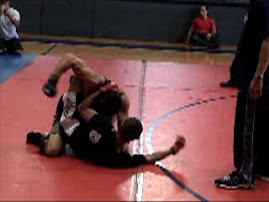
A recent Harris Poll tells us some interesting, perhaps predictable, things about sports, sports fans, and ongoing societal values in America. The online poll surveyed 2,227 adults between June 14 – 21, 2010 (a relatively small sample, but one which accounts for population size across regions). First, let’s look at the results:
Favorite Male Athletes:
Favorite Male Athletes:
- Kobe Bryant/Tiger Woods (tie)
- Derek Jeter
- Brett Favre
- Peyton Manning
- LeBron James
- Michael Jordan
- Tom Brady
- Drew Brees
- Dale Earnhardt
Favorite Female Athletes:
- Serena Williams
- Venus Williams
- Danica Patrick
- Mia Hamm
- Maria Sharapova
- Anna Kournikova
- Misty May/Shawn Johnson (tie)
- Lisa Leslie
- Billie Jean King/Martina Navratalova (tie)
Among the male athletes, the first somewhat surprising result is that Bryant and Woods stood atop the list despite run-ins with serious marital concerns, both of which were made very public, and for Woods was very recent. Of course these results are only somewhat surprising, as professional male athletes typically find it easier to transgress social boundaries with regard to promiscuity. Thus, perhaps it should not be terribly surprising for Tiger and Kobe to still be widely popular among the American public. What is remarkable is that Bryant was the most popular athlete among females polled.
The list of favorite female athletes is far more interesting. Notably, Serena and Venus Williams repeated as the two most popular female athletes (also holding the 1-2 honors last year). As with Woods, this shows a growing acceptance of African American athletes excelling in a historically Caucasian sport. With regard to the sports athletes represent, however, there is a glaring pattern. Eight out of the eleven women (11 due to two ties) come from sports that historically have been considered “acceptably female” sports: the Williams sisters, Sharapova, Kournikova, King, and Navratalova (tennis); May (volleyball); and Johnson (gymnastics). Over half of the women on the list play(ed) tennis.
May represents soccer, historically defined as a more masculine sport. As for Patrick and Leslie, they also represent historically defined male sports (auto racing and basketball, respectively). Still, both of these athletes, Patrick in particular, have gained celebrity as part of American popular culture via mainstream modeling opportunities, as have the more contemporary tennis stars on the list (both Williams sisters, Sharapova, and Kournikova). Although Kournikova was a very successful doubles player, she was never an elite singles player on the women’s tennis circuit and is certainly not in the mix of elite players now. For athletes such as King and Navratalova, though retired, at least they can claim astounding athletic and political accomplishments that explain their ongoing popularity.
Notably missing from the list is Maya Moore, the outstanding player from the UConn Huskies women’s basketball team that just won back-to-back NCAA Division I National Championships and continued a 78-game winning streak. Diana Taurasi, who currently plays for the Phoenix Mercury, was the 2009 WNBA Most Valuable Player for the season and finals. Likewise, she was absent from the list.
The list of favorite female athletes is far more interesting. Notably, Serena and Venus Williams repeated as the two most popular female athletes (also holding the 1-2 honors last year). As with Woods, this shows a growing acceptance of African American athletes excelling in a historically Caucasian sport. With regard to the sports athletes represent, however, there is a glaring pattern. Eight out of the eleven women (11 due to two ties) come from sports that historically have been considered “acceptably female” sports: the Williams sisters, Sharapova, Kournikova, King, and Navratalova (tennis); May (volleyball); and Johnson (gymnastics). Over half of the women on the list play(ed) tennis.
May represents soccer, historically defined as a more masculine sport. As for Patrick and Leslie, they also represent historically defined male sports (auto racing and basketball, respectively). Still, both of these athletes, Patrick in particular, have gained celebrity as part of American popular culture via mainstream modeling opportunities, as have the more contemporary tennis stars on the list (both Williams sisters, Sharapova, and Kournikova). Although Kournikova was a very successful doubles player, she was never an elite singles player on the women’s tennis circuit and is certainly not in the mix of elite players now. For athletes such as King and Navratalova, though retired, at least they can claim astounding athletic and political accomplishments that explain their ongoing popularity.
Notably missing from the list is Maya Moore, the outstanding player from the UConn Huskies women’s basketball team that just won back-to-back NCAA Division I National Championships and continued a 78-game winning streak. Diana Taurasi, who currently plays for the Phoenix Mercury, was the 2009 WNBA Most Valuable Player for the season and finals. Likewise, she was absent from the list.

Via the list of most popular female athletes we see an ongoing trend in American values that reward women not only for occupational success, but in some cases, more so for physical appearances. And of course, popularity trends tie in with individual and sporting sponsorships, which makes it all the more difficult for female athletes who don’t conform to gender norms to continue making a living in their sport of choice.
Recommended reading -- Coming on Strong: Gender and Sexuality in Twentieth Century Women's Sport by Susan K Cahn

Blog catalog








i like you all
ReplyDeleteI'm certainly very happy to read this blog site posts which carries plenty of helpful data, thanks for providing such information. Cheerleading
ReplyDelete